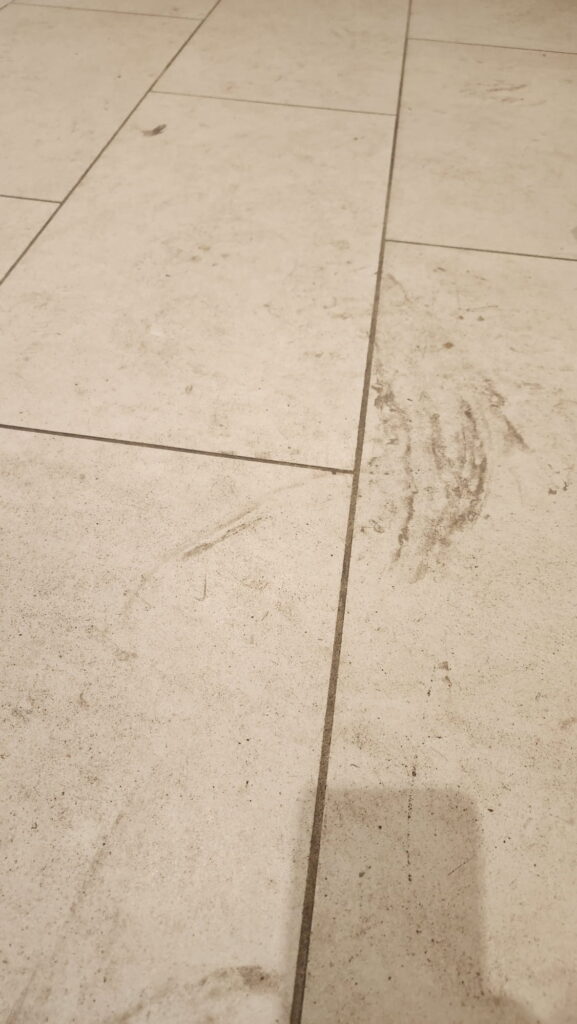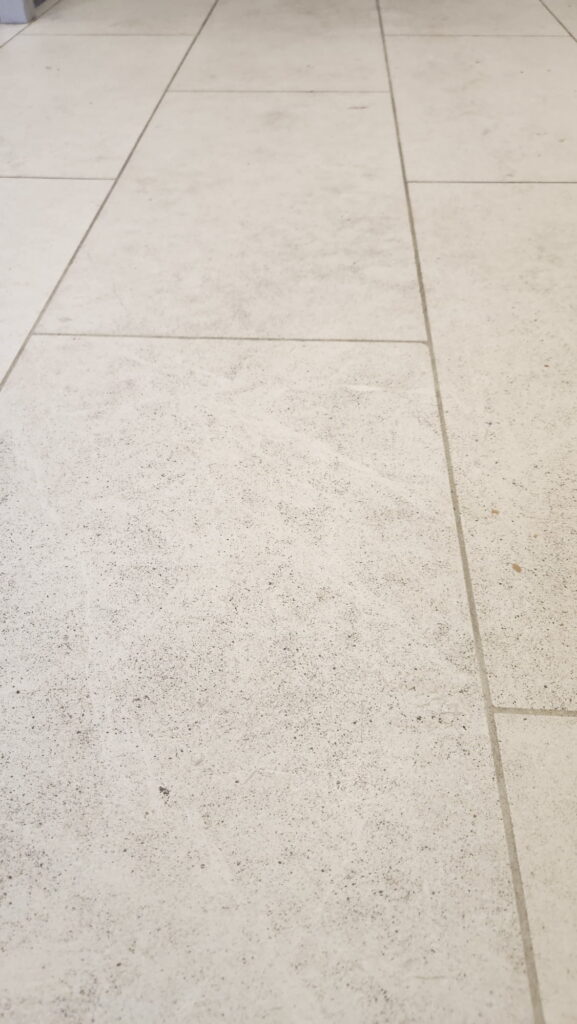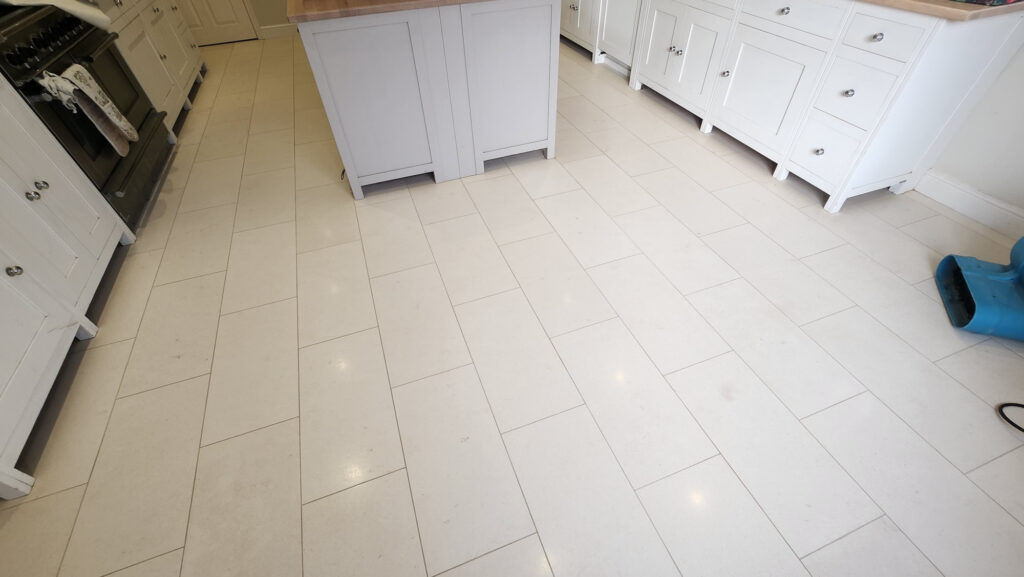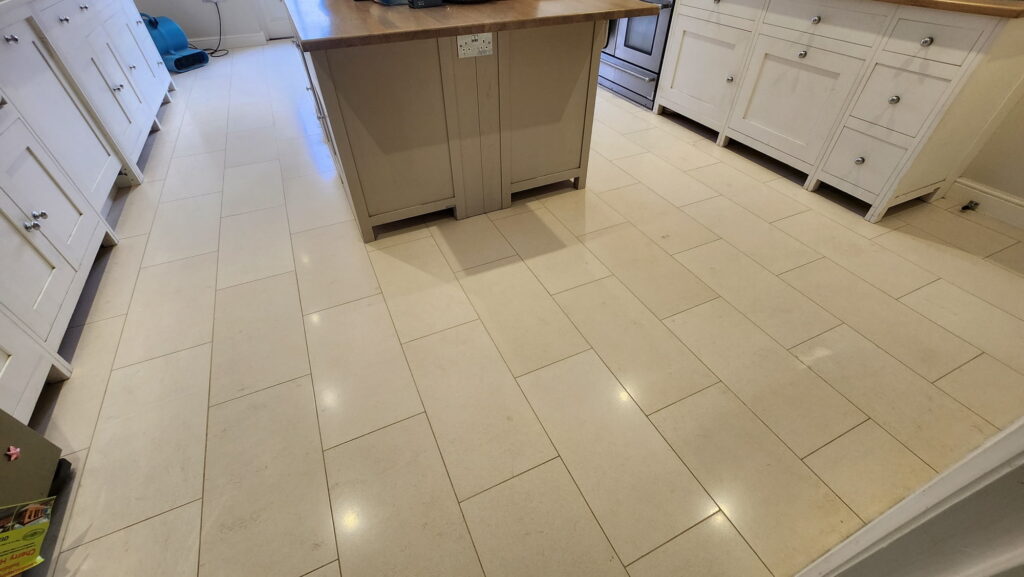Recently we were called to deep clean and seal a semi polished Limestone floor at a property near the Lincolnshire market town of Sleaford. Unfortunately, a teenage party had become rather boisterous and resulted in the floor getting in quite a state during their enthusiastic celebrations.
The main culprit was alcohol from split drinks and as you can see from the pictures it had soaked into the stone and stained it and would not simply wipe or clean off. Having visited the property to survey the floor I came up with a restorative cleaning plan and provided a quote for restoring the floor back to its polished and clean look.
 |
 |
Happy with the quote we set a date for my return.
Polishing Limestone Flooring
To clean the floor and remove stains Limestone needs to be stripped back and then polished using a set of diamond burnishing pads. The pads come is a set of four and you start with the coarse pad which fitted to a buffing machine running on slow speed, the coarse 400-grit pad which removes old sealers and opens the pores in the stone so the dirt can be flushed out. Once the pad has been run over each Limestone tile at least three times you move onto the medium 800-grit and then fine 1500-grit pads which then close the pores again and build-up the polish.

The pads generate a lot of slurry which is then rinsed off with water and then extracted using a wet vacuum. The burnishing process is then finished with the application of a very fine 3000-grit pad which is applied in the same way but with only a little water sprayed into the floor.
The last step is to use handheld burnishing blocks to get the same result in those places where the pads struggle to reach such as floor edges and corners.
Once complete a floor dryers was setup and left to run overnight to ensure the floor would be nice and dry and ready for sealing the next day. The customer can still use the floor in-between; they just have to be careful not to spill anything on it before it’s sealed.

Limestone Floor Tile Sealing
On our return the Limestone was checked for moisture using a damp meter. This confirmed the stone was dry and work could then start to apply the sealer to the floor.
I used a quality sealer called Tile Doctor Ultra-Seal for this which is a natural finish sealer that is virtually invisible. It’s also an impregnator which means it works by soaking into the stone, occupying the pores, and thereby preventing dirt from residing there. This ensures dirt remains on the surface where it can easily be cleaned away.

The customer was over the moon that we had not only removed the etching from the partying but also fully restored the floor to its original shine. The new sealer should ensure the floor is easily cleaned going forward using a mop and a suitable cleaning product which for this floor I recommended Tile Doctor Stone Soap.
Source: Limestone Floor Tile Cleaning and Renovation Service in Sleaford